Bio Final exam
1/34
There's no tags or description
Looks like no tags are added yet.
Name | Mastery | Learn | Test | Matching | Spaced |
|---|
No study sessions yet.
35 Terms
What is genetic drift?
Genetic drift is the random change in allele frequencies within a population over time due to chance events. This process can lead to the loss of genetic variation and may significantly impact small populations. Common examples of genetic drift include the bottleneck effect, which occurs when a significant portion of a population is suddenly reduced (e.g., by a natural disaster), resulting in reduced genetic diversity among the survivors, and the founder effect, where a small group from a larger population establishes a new population, carrying only a fraction of the genetic diversity of the original group.
Convergent Evolution
Convergent evolution occurs when different species independently develop similar traits due to adapting to the same environment. For example, the wings of bats and birds serve the same function of flight but evolved separately.
Divergent evolution
Divergent evolution is the process where two or more related species evolve different traits or functions, often due to adapting to different environments. An example is the variety of beak shapes in Darwin's finches, where each type evolved to suit different food sources on the Galápagos Islands.
Parallel Evolution
Parallel evolution is when two related species evolve similar traits independently due to similar environmental pressures. For example, the Tasmanian tiger and the placental wolf both developed similar body shapes despite being from different evolutionary paths.
Coevolution
Coevolution is the process in which two or more species influence each other's evolution over time. For example, flowering plants and their pollinators, such as bees, have evolved together with specific traits that benefit both species
Autotrophic speciation
Autotrophic speciation is the process where a new species evolves from a common ancestor, primarily through adaptations to different sources of energy and nutrients. An example is the evolution of plants that can photosynthesize.
Artificial selection
Artificial selection is the process by which humans breed specific plants or animals for desired traits. An example is the breeding of dogs, where different breeds are created for specific characteristics like size, behavior, or appearance
Natural Selection: Charles Darwin
Natural selection is the process where organisms better adapted to their environment tend to survive and produce more offspring. An example is the variation in peppered moths, where darker moths became more common in polluted areas due to better camouflage.
Biological species concept
The biological species concept defines a species as a group of interbreeding organisms that produce fertile offspring. For example, dogs can breed with each other and produce fertile puppies.
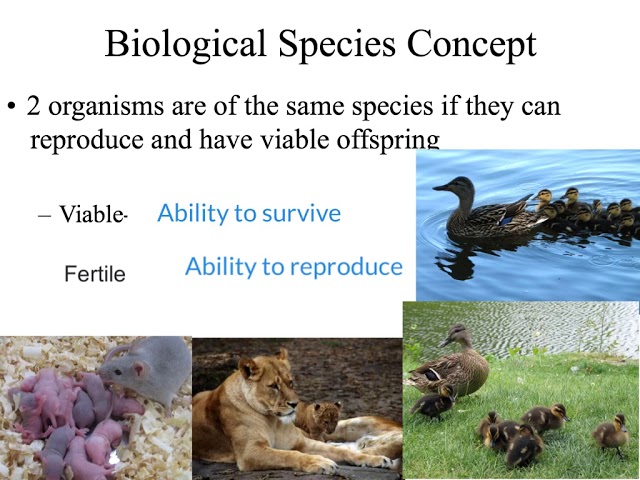
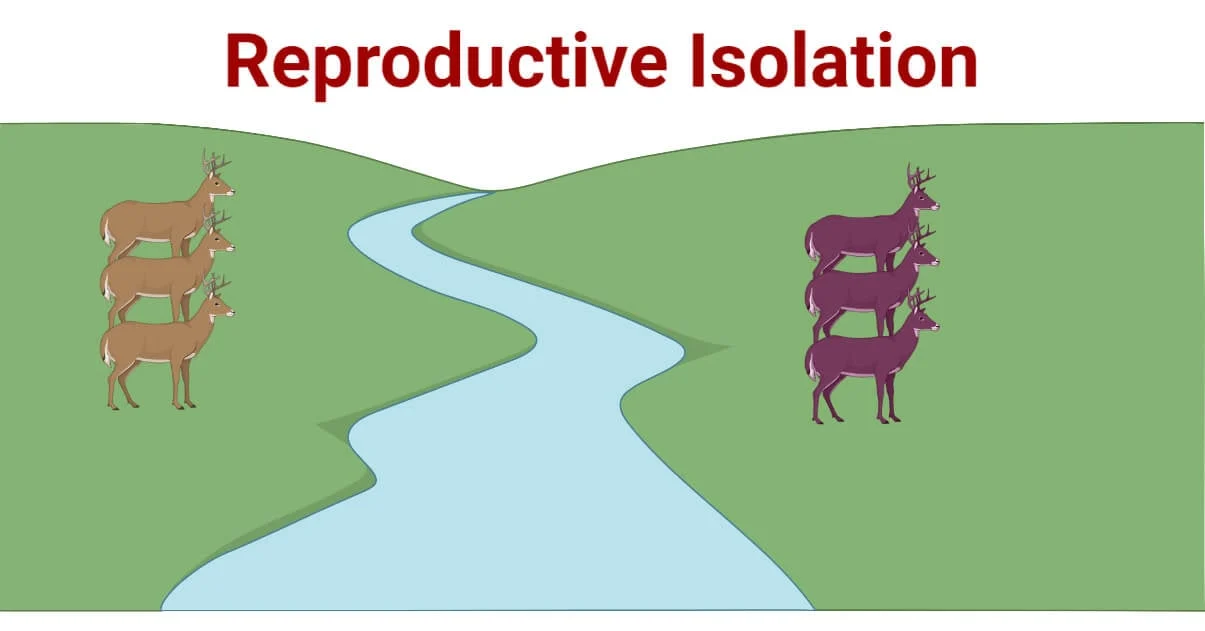
Reproductive isolation
Reproductive isolation means that different species can't mate and have babies. For example, if two species of frogs live on either side of a river, they won't be able to reproduce together. Reproductive isolation keeps species separate and prevents mixing.
Phylogenetic tree
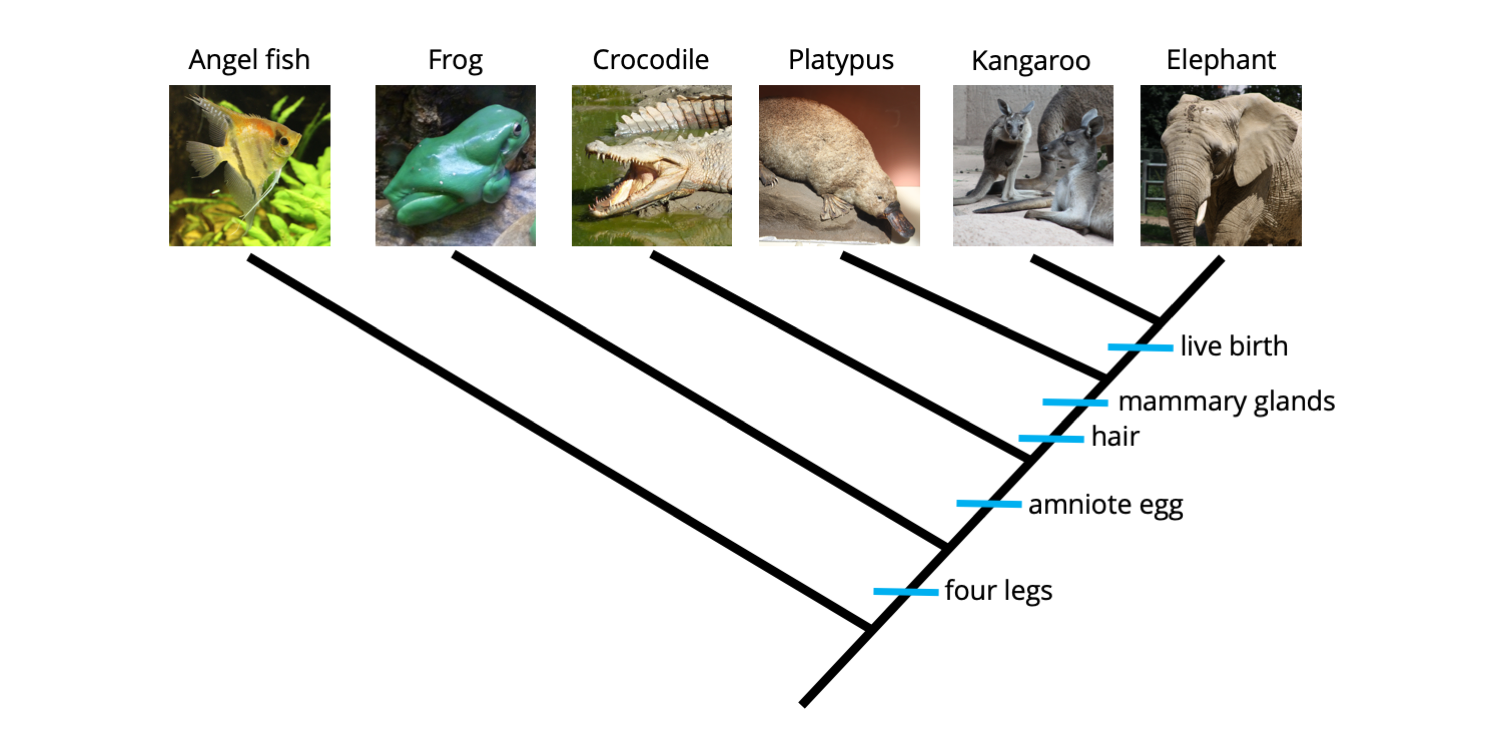
Time Scale: When did amniotic eggs first develop?
Amniotic eggs first evolved in early amniotes during the Carboniferous period, roughly 312–315 million years ago. The amniotic egg was a key evolutionary adaptation that allowed vertebrates to reproduce on land without relying on water, unlike amphibians.
Time Scale: When did seeds develop and why are they important?
Seeds first appeared around 360–350 million years ago during the Devonian period. Their major advantages include:
Embryo Protection: Seeds have a protective coat that shields the embryo from environmental stress.
Nutrient Supply: The endosperm or nutritive tissue supports early growth.
Dispersal: Seeds can travel long distances, aiding in plant colonization.
Dormancy: Seeds can remain dormant, waiting for favorable conditions to sprout.
These adaptations helped plants thrive, especially in dry environments, and contributed to the evolution of gymnosperms and angiosperms.
Gram positive bacteria
Cell Wall: Thick peptidoglycan layer.
Stain Color: Purple, because the thick peptidoglycan retains the crystal violet dye during the Gram stain process.
Characteristics:
More susceptible to certain antibiotics (like penicillin) because the thick peptidoglycan layer is easier to target.
Lack an outer membrane.
Gram negative bacteria
Cell Wall: Thin peptidoglycan layer surrounded by an outer membrane containing lipopolysaccharides.
Stain Color: Pink, because the thin peptidoglycan layer does not retain the crystal violet dye and instead takes up the counterstain (safranin).
Characteristics:
More resistant to many antibiotics due to the outer membrane, which acts as a barrier.
Often have endotoxins in their outer membrane, which can trigger inflammatory responses in humans.
Endosymbiotic theory
The Endosymbiotic Theory proposes that certain eukaryotic organelles, specifically mitochondria and chloroplasts, originated from free-living prokaryotic cells that were engulfed by an ancestral eukaryotic cell in a mutualistic relationship.
Key points of the theory:
Origin: Mitochondria and chloroplasts were once aerobic bacteria and photosynthetic bacteria, respectively, which were engulfed by a host cell.
Symbiosis: Instead of being digested, these bacteria formed a mutualistic relationship with the host, providing advantages like energy production (mitochondria) or photosynthesis (chloroplasts), while the host provided protection and nutrients.
Identifying Mammals
Hair or Fur: All mammals have hair or fur at some point during their life cycle.
Mammary Glands: Female mammals possess mammary glands that produce milk to feed their young.
Warm-Blooded (Endothermic): Mammals regulate their internal body temperature, maintaining it at a constant level regardless of the environment.
Vertebrates: Mammals have a backbone or spine made of vertebrae.
Live Birth (Mostly): Most mammals give live birth (except for monotremes like platypuses and echidnas, which lay eggs).
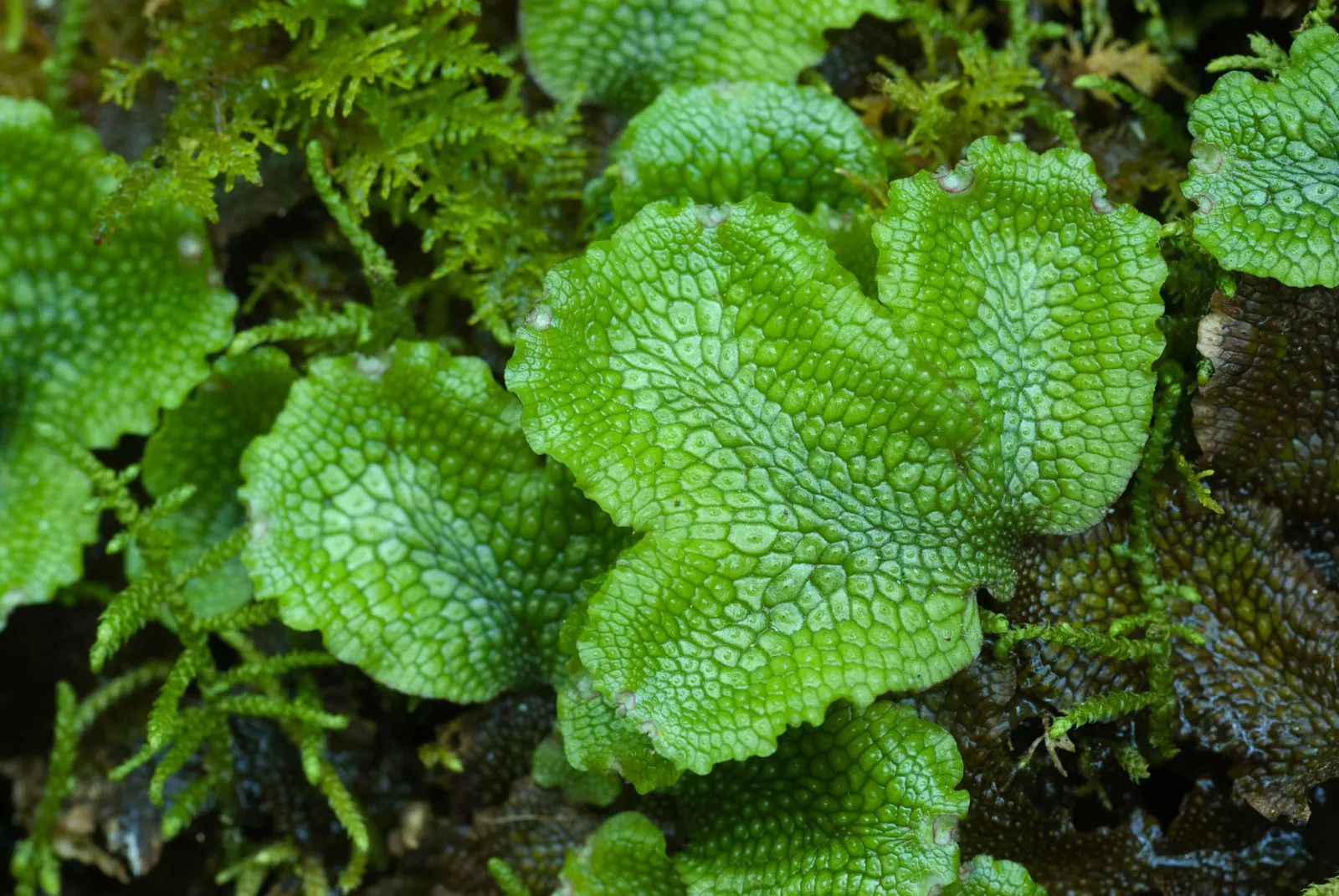
Identifying liverwort
Non-Vascular Plants: Liverworts lack vascular tissues (xylem and phloem), which means they do not have specialized structures to transport water and nutrients.
Flat, Leafy Structure: Many liverworts have a flattened, thalloid (non-leafy) body, but some have a leafy appearance with tiny, scale-like leaves arranged in two or more rows.
Small Size: Liverworts are typically small, often only a few millimeters to a few centimeters in size.
Reproduction via Spores: Liverworts reproduce via spores produced in specialized structures called sporangia, which are usually found on the underside of the plant.
Gametophyte-Dominant Life Cycle: In liverworts, the gametophyte (haploid) stage is the dominant, photosynthetic stage. The sporophyte is small and dependent on the gametophyte.
No True Roots: Liverworts lack true roots, but they have rhizoids, which are hair-like structures that anchor them to the substrate.
Moist Environments: Liverworts are typically found in moist, shaded environments such as forests, rocks, and soil, where water is readily available for reproduction.
Simpler Structure: Liverworts lack the complex structures of higher plants, like leaves, stems, and roots
What are arthropods ?
Arthropods are a type of animal that have a hard outer shell, jointed legs, and bodies divided into segments. For example, insects, spiders, and crabs are all arthropods. Examples of arthropods include insects like butterflies, arachnids like spiders, and crustaceans like lobsters. These animals all share common features such as an exoskeleton.
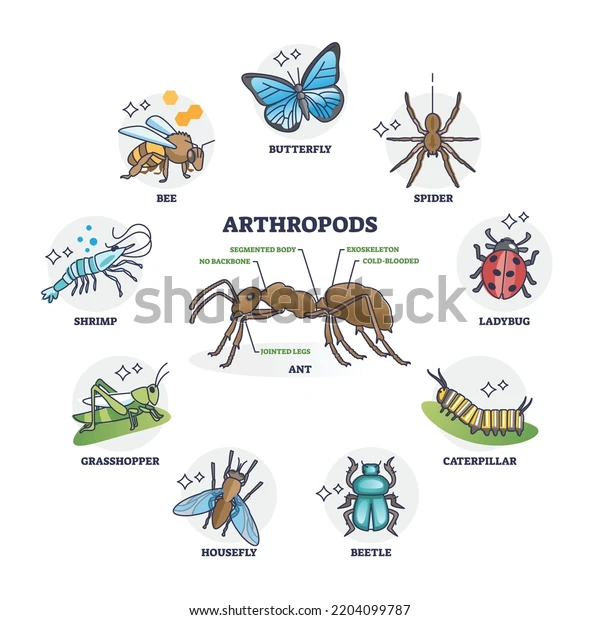
Higher order organisms what might you find in their gastrovascular cavity?
In Higher Organisms (e.g., Vertebrates):
As organisms evolve, the gastrovascular cavity evolves into more specialized structures:
Complete Digestive System: Higher organisms have a complete digestive tract (mouth to anus), which separates digestion from absorption and waste removal.
Stomach and Intestines: In these more complex organisms, digestion takes place in organs like the stomach and intestines, where food is further broken down by enzymes and nutrients are absorbed.
Endosymbiosis
One organism lives inside another and often evolves into a permanent part of the host (e.g., mitochondria in cells).
Commensalism
One organism benefits, the other is neither helped nor harmed (e.g., birds riding on mammals).
Mutualism
Both organisms benefit from the interaction (e.g., bees and flowers).
Eukaryotic vs Prokaryotic
Summary Table:
Feature | Eukaryotic Cells | Prokaryotic Cells |
|---|---|---|
Nucleus | Membrane-bound nucleus | No nucleus (DNA in nucleoid region) |
Cell Size | Larger (10–100 µm) | Smaller (1–5 µm) |
DNA | Linear, associated with histones | Circular, no histones |
Organelles | Membrane-bound (e.g., mitochondria, chloroplasts) | No membrane-bound organelles |
Ribosomes | 80S ribosomes | 70S ribosomes |
Reproduction | Sexual (meiosis) and asexual (mitosis) | Asexual (binary fission) |
Cell Wall | Present in plants and fungi (cellulose/chitin) | Present (peptidoglycan in bacteria) |
Examples | Animals, plants, fungi, protists | Bacteria, archaea |
Ecological roles of different organisms
Bacteria: Decomposers, nitrogen fixers, nitrifiers/denitrifiers, photosynthesizers, bio remediators, pathogens, and symbionts.
Plants: Primary producers, oxygen producers, habitat providers, and carbon sequestration agents.
Herbivores: Primary consumers, seed dispersers, and grazers that control plant populations.
Carnivores: Secondary and tertiary consumers, predators, and scavengers
Organ system/tissues
Arteries: Thick walls, carry oxygenated blood away from the heart, high pressure.
Veins: Thinner walls, carry deoxygenated blood to the heart, low pressure, contain valves.
Capillaries: Very thin walls (one cell thick), where exchange of gases and nutrients occurs between blood and tissues.
Other Organ Systems and Tissues:
Nervous System:
Organs: Brain, spinal cord, nerves.
Function: Transmits electrical signals between different parts of the body. It controls movements, sensory processes, and homeostasis.
Tissues: Neurons (nerve cells) transmit electrical signals, while glial cells support and nourish neurons.
Muscular System:
Organs: Skeletal muscles, cardiac muscle, smooth muscle.
Function: Facilitates movement, maintains posture, and produces heat.
Tissues: Muscle tissue includes skeletal muscle (voluntary movement), cardiac muscle (heart contractions), and smooth muscle (involuntary movement in organs).
Respiratory System:
Organs: Lungs, trachea, bronchi, diaphragm.
Function: Facilitates gas exchange (oxygen in, carbon dioxide out) between the body and the environment.
Tissues: Epithelial tissue lines the airways, and alveolar tissue in the lungs allows gas exchange.
Digestive System:
Organs: Mouth, esophagus, stomach, intestines, liver, pancreas.
Function: Breaks down food into nutrients and absorbs them into the bloodstream.
Tissues: Epithelial tissue lines the digestive tract, smooth muscle moves food through peristalsis, and connective tissue supports and binds organs.
Excretory (Urinary) System:
Organs: Kidneys, bladder, ureters, urethra.
Function: Removes waste products and excess substances from the blood, maintains water balance.
Tissues: Nephron tissue in the kidneys filters blood, and smooth muscle in the bladder helps expel urine.
Endocrine System:
Organs: Glands like the pituitary, thyroid, adrenal glands, pancreas.
Function: Produces hormones that regulate growth, metabolism, and other vital functions.
Tissues: Glandular tissue produces and secretes hormones, and epithelial tissue lines the glands.
Immune System:
Organs: Spleen, lymph nodes, bone marrow, thymus.
Function: Defends the body against pathogens and foreign invaders.
Tissues: Lymphoid tissue produces white blood cells, and connective tissue forms the framework of lymph nodes and spleen.
Predator Prey relationship
Key Characteristics:
Predator: The organism that captures and eats another.
Prey: The organism that is captured and eaten.
This relationship drives natural selection, influencing the evolution of both predators and prey.
Ecological Importance:
Helps control population sizes: Predators keep prey populations from growing too large, which helps prevent overgrazing or depletion of resources.
Promotes biodiversity: Prevents any one species from dominating an ecosystem.
Leads to evolutionary adaptations:
Prey may develop camouflage, speed, or defensive mechanisms.
Predators may evolve better hunting strategies, sharper senses, or enhanced physical traits.
Example:
Lynx and snowshoe hare: As hare populations increase, lynx populations also grow due to more food. But when lynx overhunt hares, the hare population drops, which eventually leads to a decline in lynx numbers. This cycle continues and is a classic example of predator-prey dynamics.
Homeostasis
The process by which an organism maintains a stable internal environment despite changes in external conditions. It's essential for survival and proper functioning of cells and organs.
🔄 Negative Feedback Systems
How It Works:
A stimulus disrupts homeostasis (e.g., body temperature rises).
Receptors detect the change.
A control center (usually the brain) processes the information.
Effectors (like glands or muscles) respond by opposing the change.
The response returns the system to balance.
1. Body Temperature Regulation:
Stimulus: Body gets too hot.
Response: Sweating and dilation of blood vessels → heat is lost → body cools down.
Positive feedback
Positive feedback is a process in which the response to a stimulus amplifies or reinforces the original change, moving the system further away from homeostasis — at least temporarily. Unlike negative feedback, which restores balance, positive feedback pushes the system in the same direction until a specific goal is reached.
Ex- Childbirth:
Stimulus: Baby pushes against the cervix.
Response: The brain releases oxytocin, which increases uterine contractions.
More contractions → more oxytocin → stronger contractions → continues until baby is born.
🧫 Zygote
A zygote is the first cell formed when two gametes (sperm and egg) fuse during sexual reproduction.
It is diploid (2n), meaning it has two sets of chromosomes (one from each parent).
The zygote undergoes mitosis to develop into a new multicellular organism.
Gamete
A gamete is a haploid (1n) reproductive cell, like a sperm or egg, produced via meiosis.
Gametes fuse during fertilization to form a zygote.
They cannot grow into a full organism on their own — they need to combine.
Example: Human sperm and egg, plant pollen (male gamete), and ovules (female gamete)
Spore
A spore is usually a haploid (1n) cell produced asexually or by meiosis in some organisms (like fungi, algae, and plants).
Unlike gametes, spores do not need to fuse with another cell — they can grow directly into a new organism (often a gametophyte in plants).
Spores are used in alternation of generations in plants and fungi.
Example: Ferns release spores that grow into independent gametophytes.
Alternation of generations
Alternation of generations is a reproductive cycle found in plants, algae, and some fungi, where the organism alternates between two multicellular stages:
A haploid stage: the gametophyte
A diploid stage: the sporophyte
🌱 Gametophyte:
Haploid (1n) – has one set of chromosomes.
Produces gametes (sperm and egg) by mitosis.
Gametes fuse during fertilization to form a diploid zygote, which grows into a sporophyte.
🌿 Sporophyte:
Diploid (2n) – has two sets of chromosomes.
Develops from the zygote.
Produces haploid spores by meiosis.
These spores grow into new gametophytes, continuing the cycle.